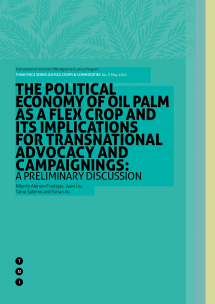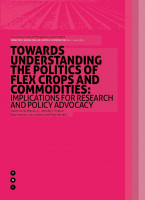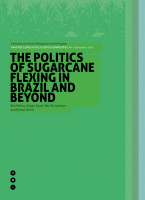The Political Economy of Oil Palm as a Flex Crop And its implications for Transnational Advocacy and Campaignings: A Preliminary Discussion
The ‘how’ and ‘why’ of oil palm flexing is heavily influenced by a synthesis of forces and relations within and around the oil palm value web. These dynamics impact the way flexing among oil palm’s different uses is influenced and/or carried out by various powerful actors within the state, the private sector, and civil society.

Authors
Conclusions
In this paper, we have argued that the dynamics of oil palm flexing – why it is flexed, how, by whom and where – are closely related to world historical, political and economic conditions and, more specifically, to the current convergence of multiple global crises. The flexibility of oil palm is emerging alongside the crop’s material, technological and profitability bases.
Among these, the first is satisfied through the natural character of oil palm, while the following two bases are connected to the current accumulation imperative, the green economy paradigm and the changes in the global food and agro-commodities regime. While the international politico-economic conjuncture plays a key role in why a flex-commodity is more valuable at certain times, the extent of its value and the processes that ascribe this value are also impacted by regional differences and local complexities. Further research is needed to understand how these multiple layers converge and shape the commodity’s flexibility and the paths it takes in the value web.
We have also discussed that the ‘how’ and ‘why’ of oil palm flexing is heavily influenced by a synthesis of forces and relations within and around the oil palm value web. These dynamics impact the way flexing among oil palm’s different uses is influenced and/or carried out by various powerful actors within the state, the private sector, and civil society.
In order to better address the question of whether and how the flexing of oil palm occurs within its value web, the relations and interactions of producers, traders, consumers, policy makers and civil society actors requires a deeper analysis. In engaging with this discussion, the questions of who benefits from the flexing of oil palm, how they benefit, and at what costs, can also be approached.
Another important area of analysis is the ‘hidden’ nature of oil palm flexing. We are left with the question of: why does oil palm flexibility remain so convoluted, and what are the roles of certain actors in maintaining this obscurity? For example, when looking at the ingredients on packages of products containing palm oil, dozens of aliases are printed rather than simply ‘palm oil’. If one picks up a beauty product, the long list of ingredients only says ‘glycerine’, a deviation of palm oil. Why is this? And how does this contribute to the perplexing manner in which palm oil is flexed?
Consumers without specific knowledge of palm oil and how it is fractionated cannot always tell when they have purchased a palm oil-based product. What does this tell us about flex commodities? And to bring it an even broader level of analysis, what does it tell us about the current biotechnological, industrial agricultural complex? All these questions may provide fresh empirical data on the possible impacts on different actors connected to the oil palm value web.
One question that requires further attention is whether, to what extent and in what ways, the strengthened flexibility of oil palm may shape trajectories of agrarian change. That is, how does increasing demand for oil palm’s multiple products drive oil palm acreage expansion? How would the further expansion of oil palm change land (and water) use, access and control relations at the production sites? What implications could there be on peasants, small-scale outgrowers, rural workers, and on the environment?
And even further, how can any concerned actor address the possible implications of, for example, palm oil flexing, if we cannot even trace the way it is flexed due to the obscurity of the commodity’s value web? This connects to a question posed by Borras et al.: ‘How does one regulate palm oil, which has multiple and flexible uses? Should it be a concern for the food, fuel or industrial sector?’. On top of this, how can negatively impacted social groups address the actors and stages involved in the flexing of oil palm, considering its entangled value web? This brings us to our final point regarding the implications for critical political advocacy and campaigning.
Clearly, with the growing interest from financialized capital in oil palm’s multiple uses, and the expensive bio-refineries coming into play, it is likely that the highly concentrated global value web of oil palm will become even more concentrated. Corporations have increasingly more leverage within this web and, as the story often goes, this may lead to further co-option and appropriation of state actors and large NGOs within the narrative of economic development, responsibility, and sustainability – and potentially also within the social branding discourse.
If this does take place, how will the social actors leading oppositional struggles to the oil palm complex respond to these alliances in a sophisticated manner that addresses the multiple issues and relations defining the politics of oil palm flexing?
Again, there is no simple answer to this. However, comprehensive Type D advocacy and campaigning efforts may provide a solution by joining a multi-issue framework with transnational multi-constituent coalitions struggling against the impacts and the rational of oil palm flexing, as well as for a transformative project like food sovereignty.



